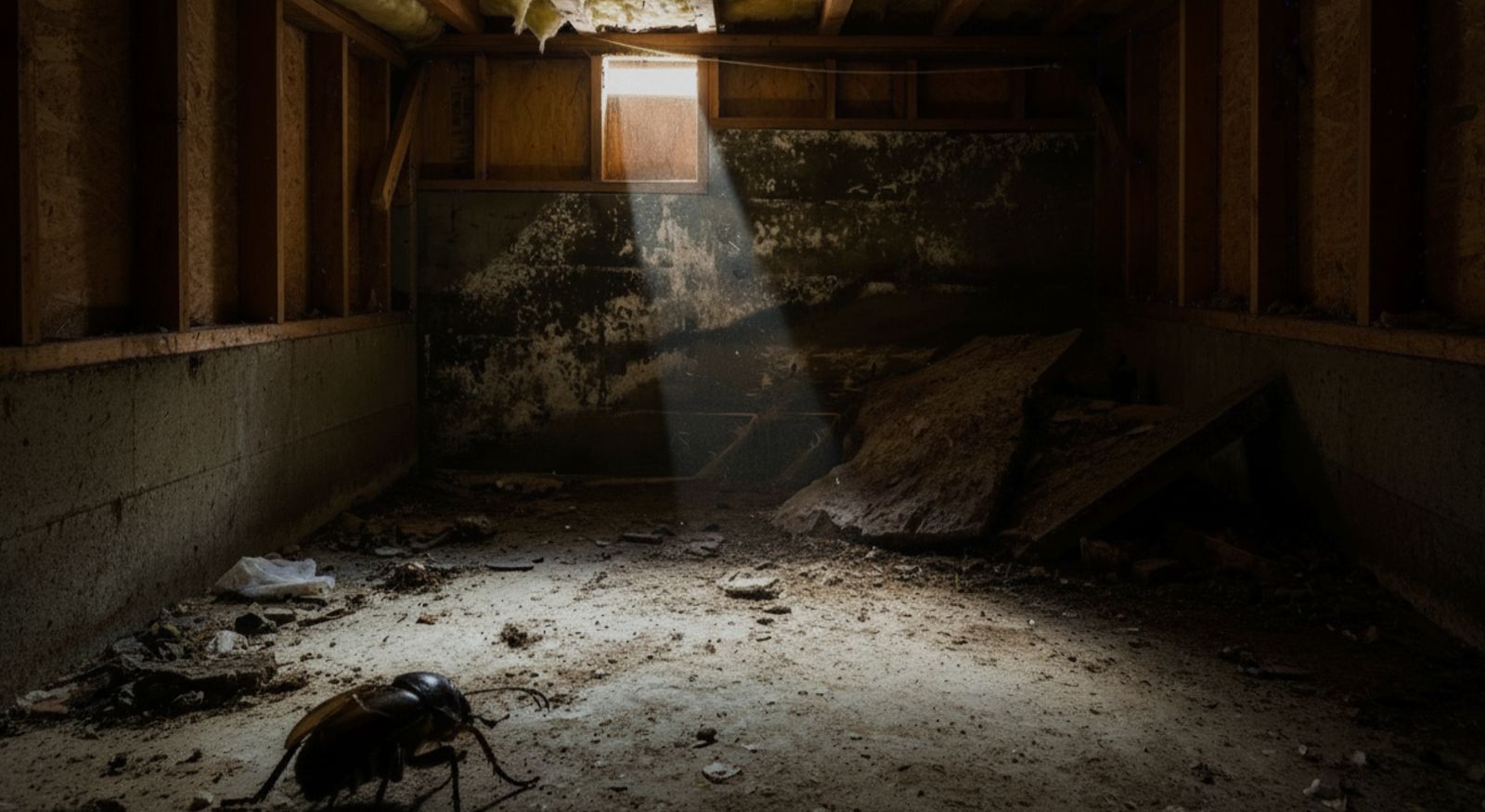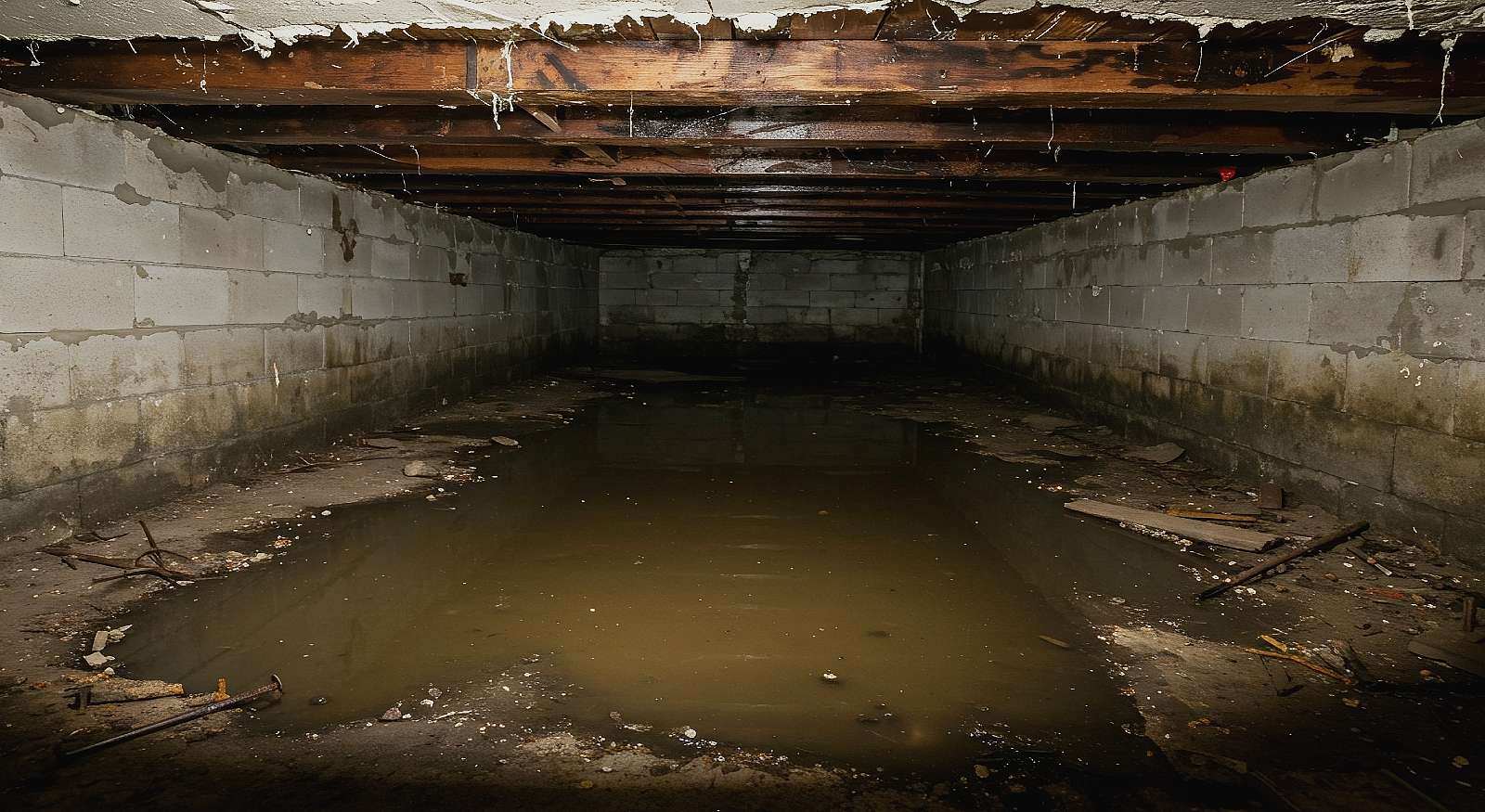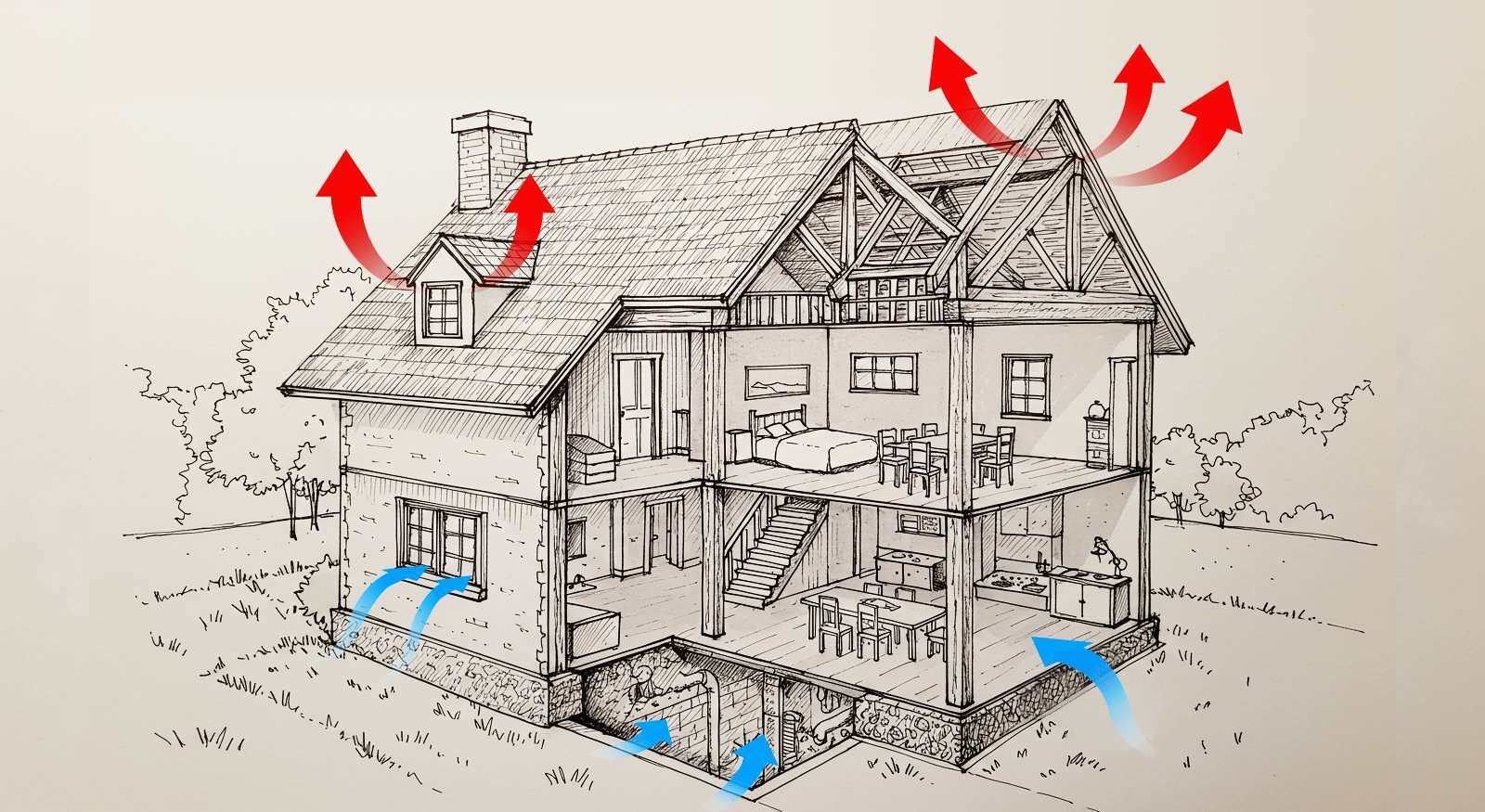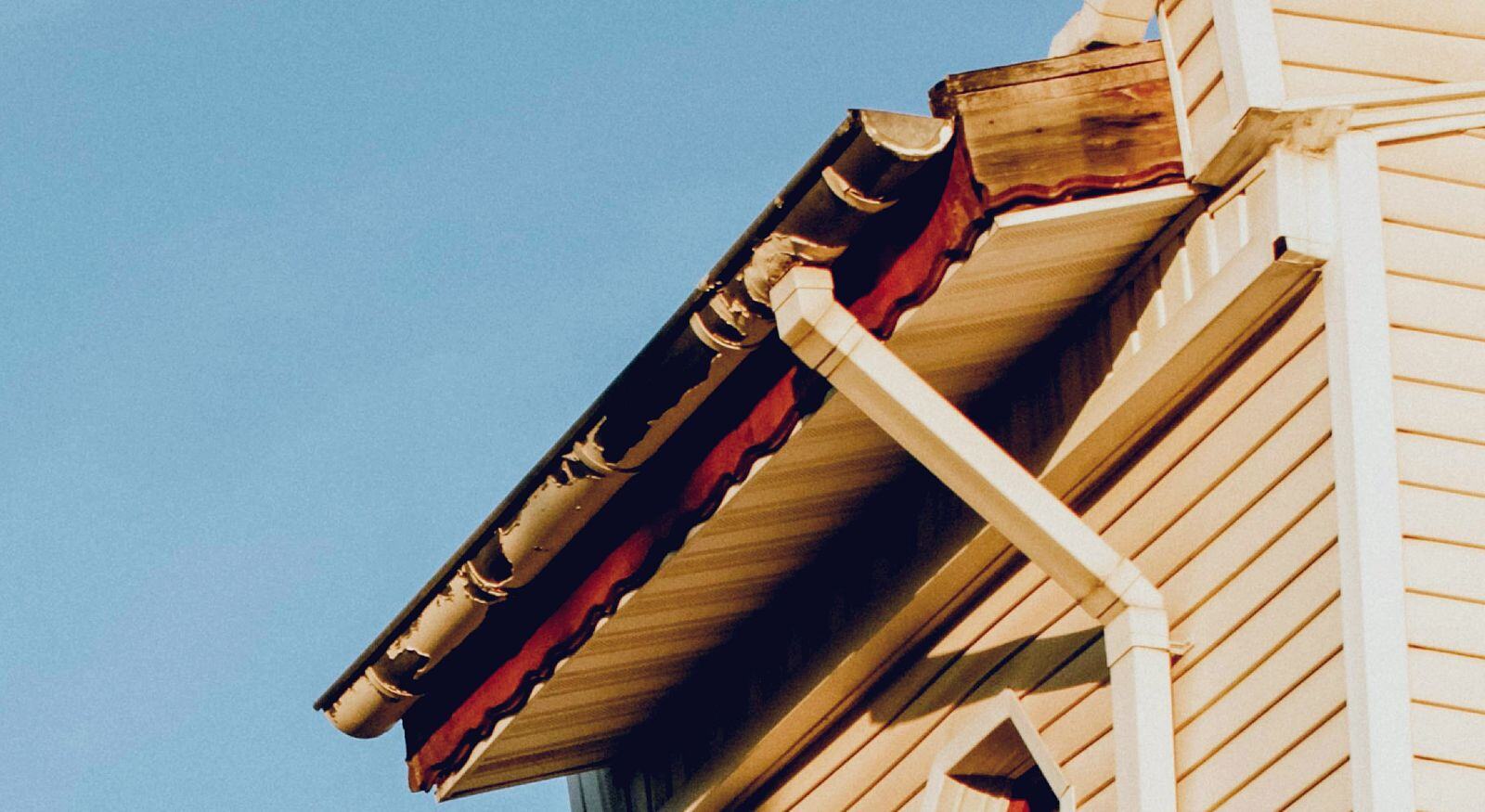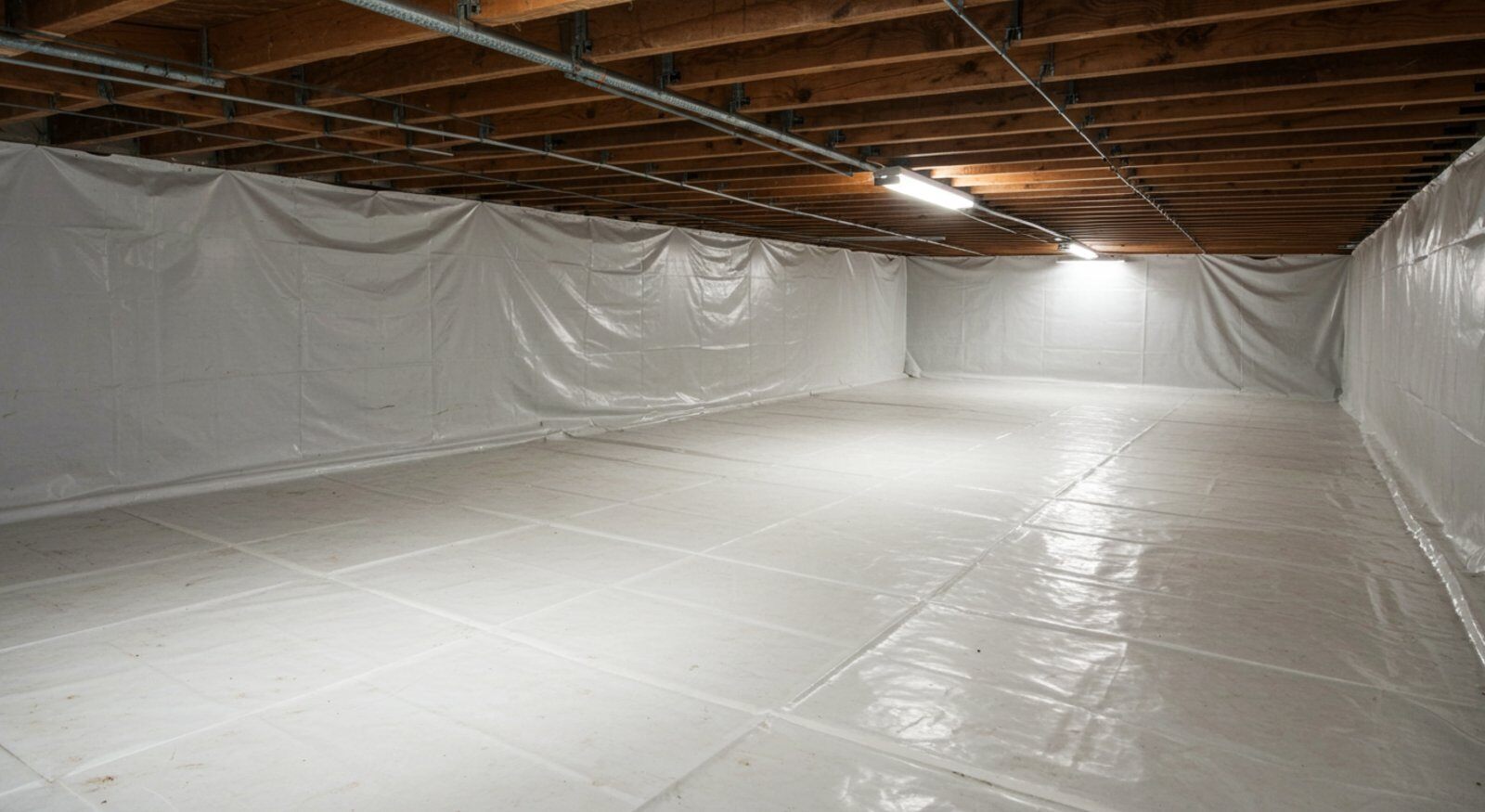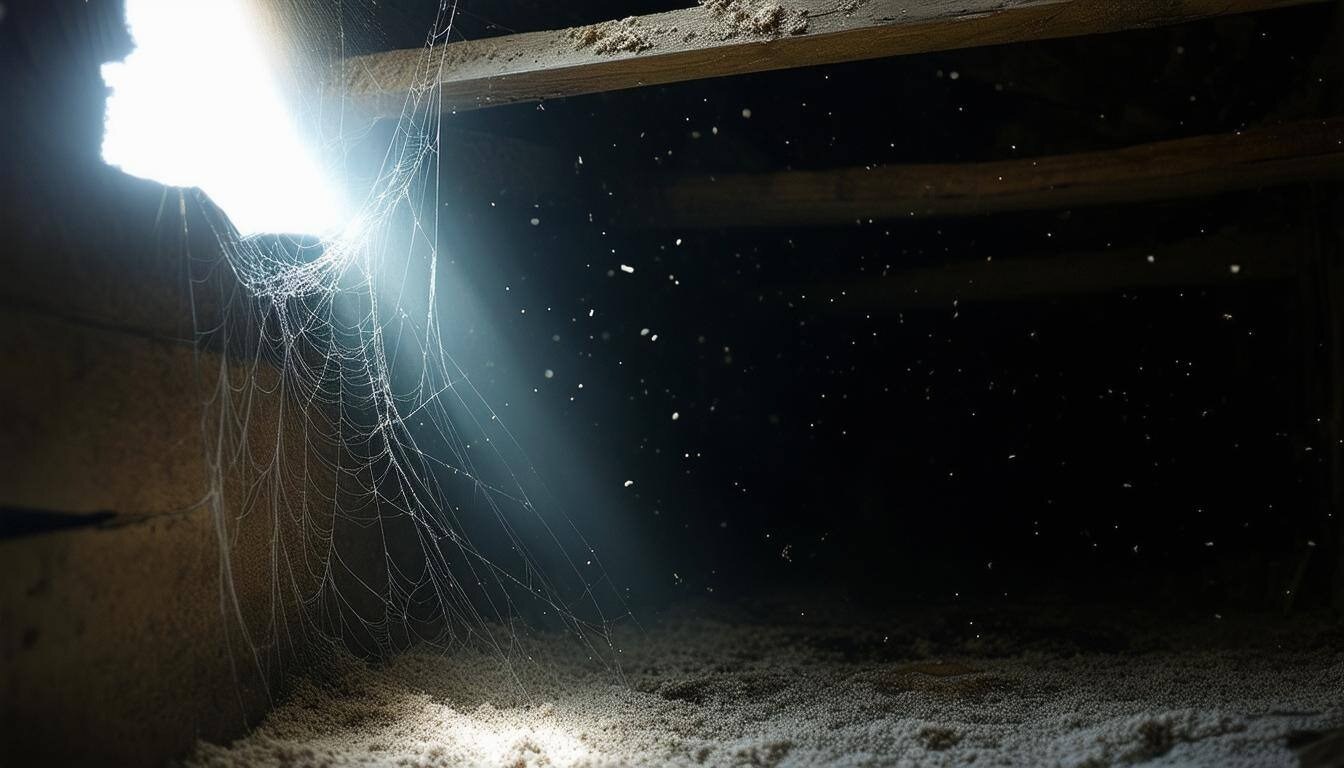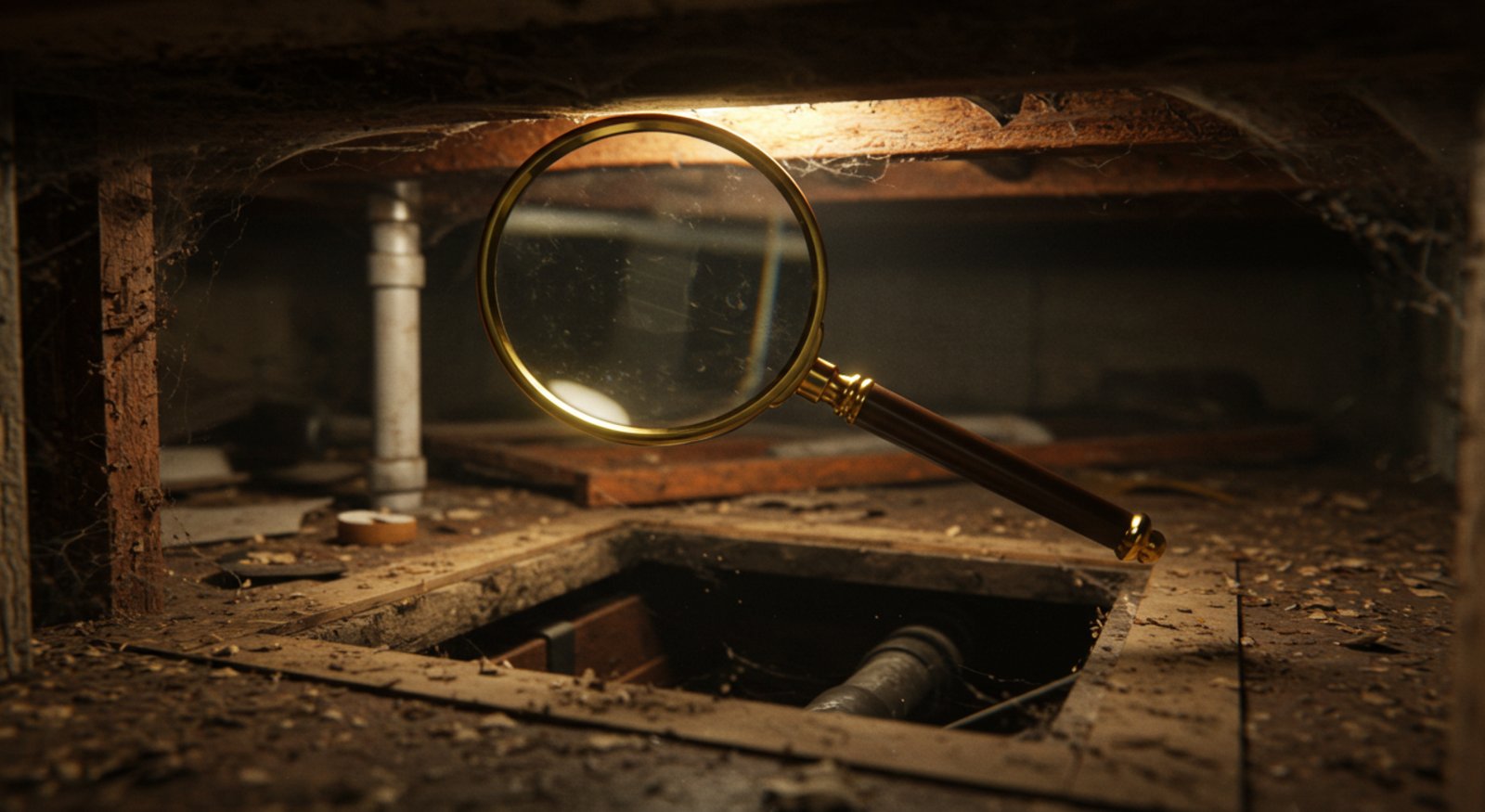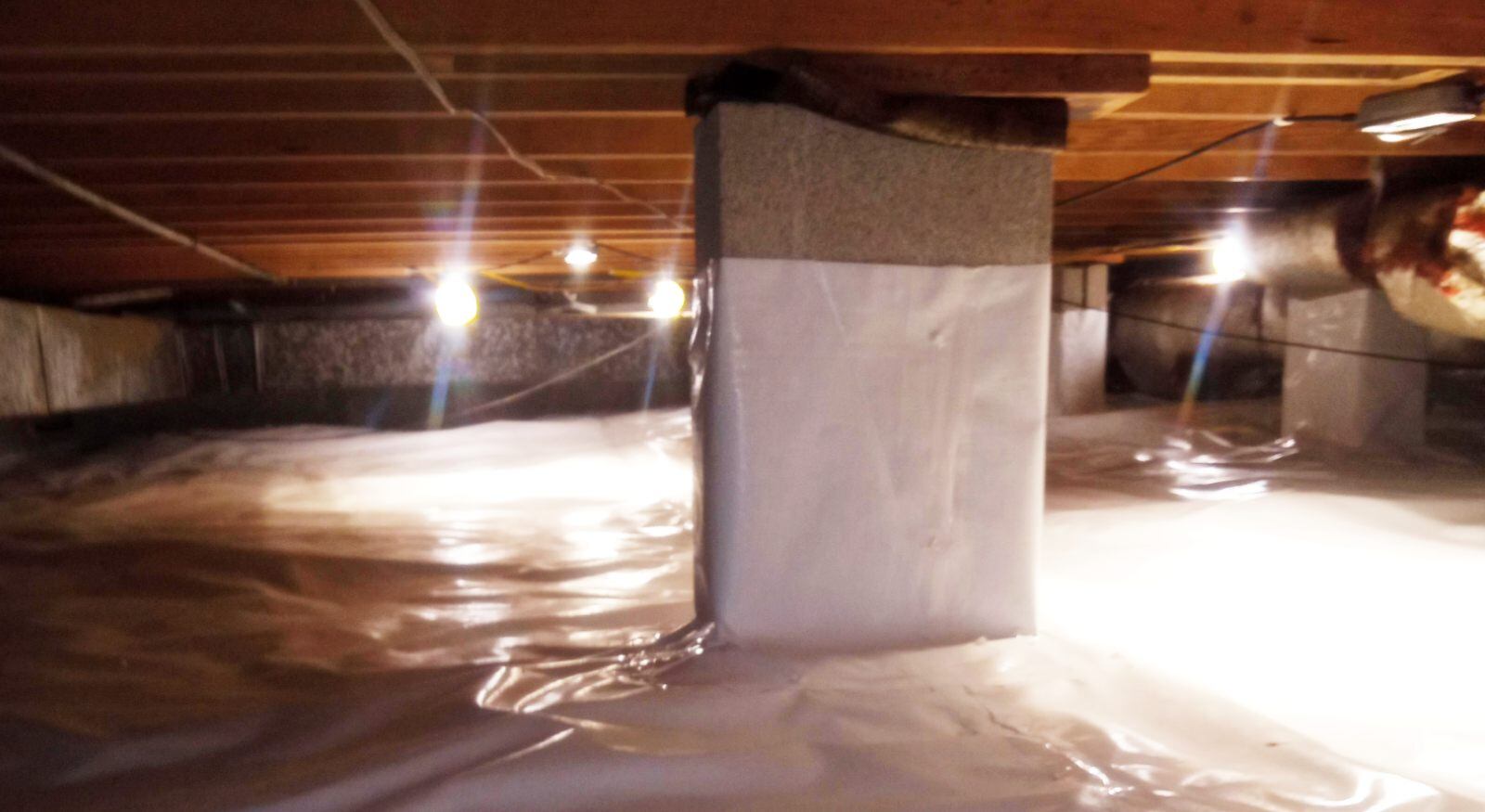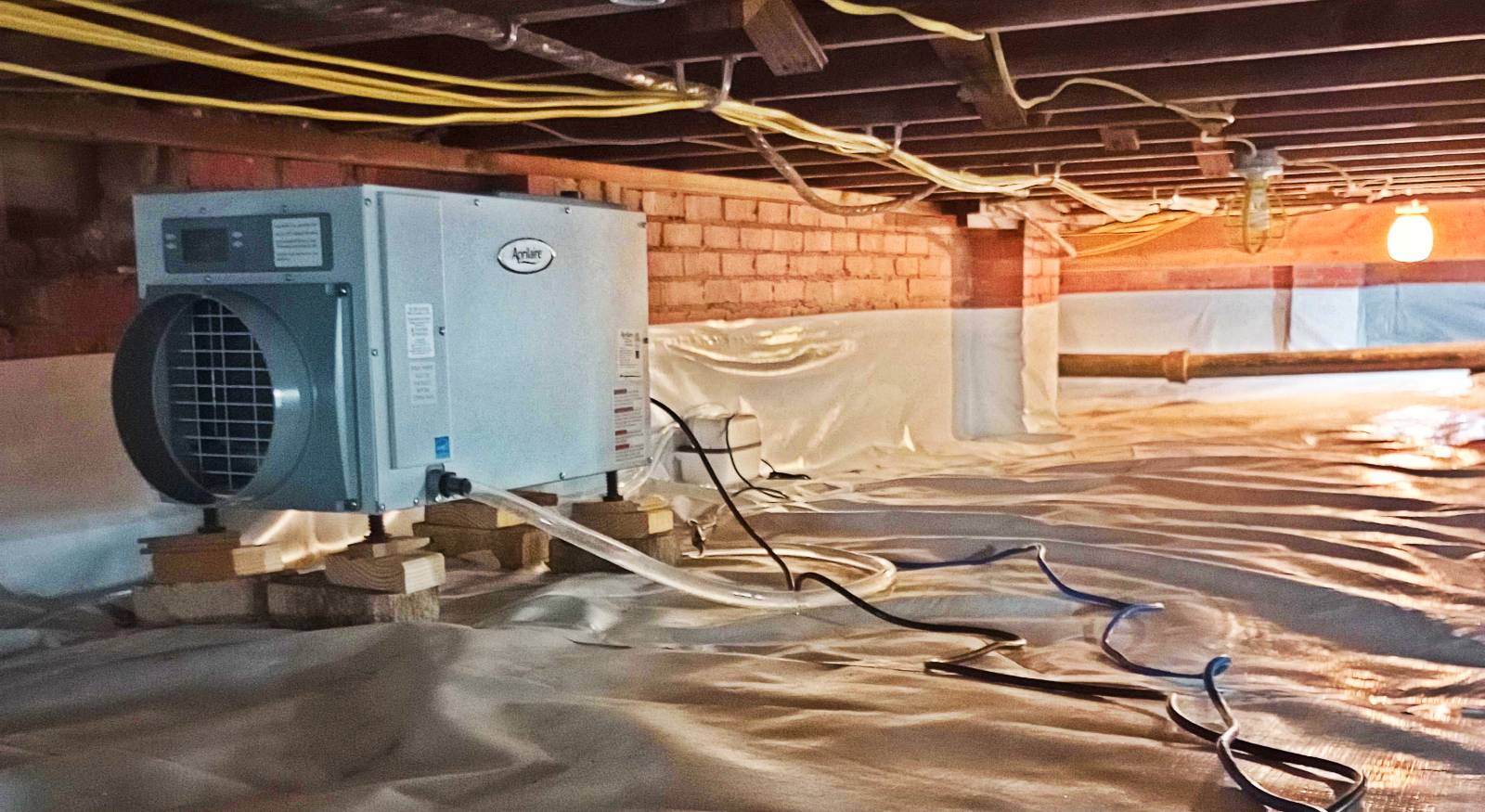Everything You Need to Know About Insulating Your Crawl Space
September 12th, 2025
4 min read
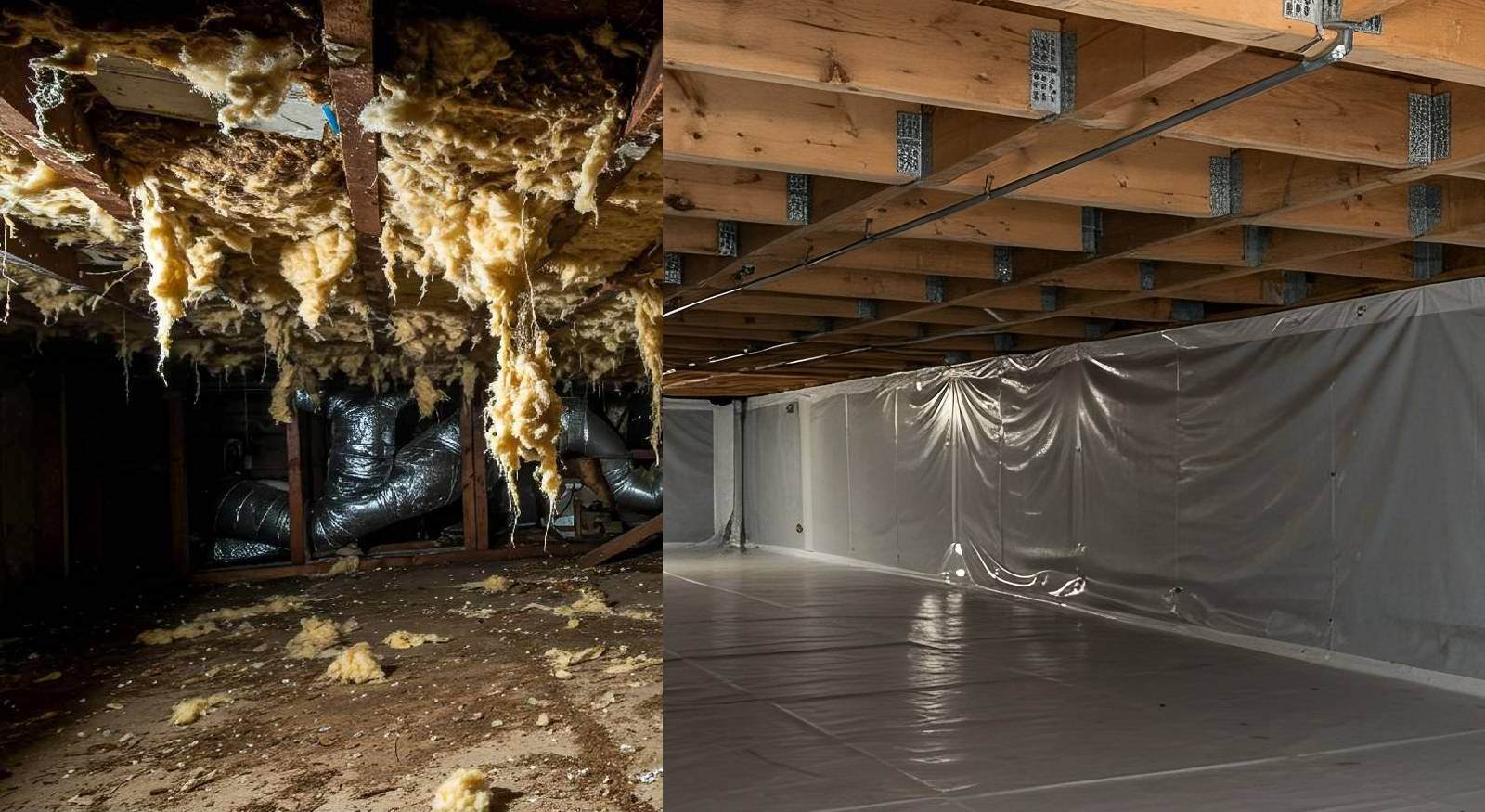
With the high cost of energy bills, you are probably looking for solutions to lower those prices. Can insulation in your crawl space be the answer you were looking for?
As the experts in crawl space encapsulation in South Arkansas, we have extensive experience with both good and faulty insulation. Frankly, there is a lot of conflicting advice out there, but we are here to cut through the confusion.
Let's explore both the pros and cons of different insulation approaches. We will also discuss when insulation is bad and explain how it works with crawl space encapsulation. Let's turn that crawl space from a sweatbox into a clean, energy-efficient space.
The Arkansas Climate and Crawl Spaces
You probably already know this, but South Arkansas's climate is hot and humid almost year-round. This presents a unique challenge for crawl spaces. Moisture is its biggest enemy and can wreak havoc on your home's structure and air quality.
- High Humidity: Moisture-laden air seeps into crawl spaces, leading to condensation, mold growth, and wood rot.
- Heat and Humidity: This troubling combination breeds pests and exacerbates moisture problems.
- Seasonal Variations: While summers are consistently hot and humid, we also experience periods of heavy rainfall, which can flood crawl spaces.
Insulate Crawl Space Walls, Not The Ceiling
Insulating crawl spaces in South Arkansas can be a smart move, but it's important to choose the right approach and materials.
 An example of improper insulation in the ceiling of a crawl space.
An example of improper insulation in the ceiling of a crawl space.
One common mistake is insulating the crawl space ceiling with fiberglass batts. Insulation between the floor joists can lead to many problems. As condensation accumulates, it can cause the insulation to sag and pull away. Plus, the extra moisture creates a cozy environment for mold growth.
A better practice is to insulate the crawl space walls, avoiding fiberglass or cellulose insulation. Lined foam boards that act as a vapor barrier can be a good solution for this scenario.
Benefits
- Reduces thermal bridging and heat transfer.
- Helps prevent condensation on cool wall surfaces.
- Creates a more stable and comfortable environment.
Extra Considerations
- A robust vapor barrier is key to preventing moisture intrusion.
- Wall insulation alone won't address ground moisture issues.
When NOT to Consider Insulation
Specific scenarios exist where insulating your crawl space might not be the best course of action. Before committing to insulating your crawl space, it's a good idea to assess your specific situation and consider factors such as climate, moisture levels, and overall home insulation.
- Existing Moisture Problems: Insulating your crawl space will only trap the moisture and exacerbate the problem if you have active water leaks or significant standing water. Address moisture issues first.
- Poor Ventilation: Insulating your crawl space can create a breeding ground for mold and mildew if it lacks adequate ventilation. Ensure proper ventilation before insulating.
- Structural Damage: If your crawl space has existing structural damage, such as wood rot or foundation cracks, insulating it won't solve the underlying problem. Address structural issues first.
How to Keep Crawl Space Insulation Dry
Even with the best insulation in place, our humid Arkansas climate can still threaten your crawl space. Insulation can become a sponge for moisture if not properly managed, leading to mold growth and reduced effectiveness. Here's how to ensure your insulation stays dry and mold-free.
Vapor Barrier
- A high-quality vapor barrier is your first line of defense. It must be installed flawlessly, covering all exposed soil and extending up the walls.
- Pay close attention to seams and penetrations. Any gaps will allow moisture to sneak through.
- Consider a thicker, more durable vapor barrier for added protection.
Controlled Ventilation
- While sealing is important, some ventilation is still necessary. Controlled ventilation allows for air exchange without introducing excessive moisture.
- Consider installing a dehumidifier in conjunction with ventilation to actively remove moisture from the air.
- Don't rely only on traditional crawl space vents, as they can bring in humid outside air.
Proper Drainage Outside
- Grading around your home can redirect rainwater away from the foundation.
- Clean gutters and downspouts regularly to prevent water from pooling near the crawl space.
- Extend downspouts at least 5-10 feet away from the foundation.
Addressing Internal Moisture Sources
- Inspect plumbing pipes for leaks and condensation.
- Make sure there is proper ventilation in bathrooms and kitchens to prevent moisture from migrating to the crawl space.
- Seal any air leaks between the living space and the crawl space.
Regular Inspections
- Periodically inspect your crawl space for signs of moisture, such as condensation, damp spots, or mold growth.
- Pay close attention to areas where pipes or wires penetrate the vapor barrier.
- Use a moisture meter to check the moisture content of the insulation.
Choosing the Right Insulation
- Opt for insulation materials that are less susceptible to moisture absorption, such as rigid foam boards or closed-cell spray foam.
- Avoid fiberglass batts in humid areas, as they readily absorb moisture.
Crawl Space Encapsulation: The Ultimate Solution
In South Arkansas, crawl space encapsulation is often the most effective solution for moisture control and energy efficiency.
How it Works
The entire crawl space is sealed with a heavy-duty vapor barrier and insulation. All the vents and entry points are closed, leaving just one access point with a closed door for easy entrance. To keep everything nice and dry, a dehumidifier and hygrometer are set up to control and check the moisture levels.
Benefits
- Superior moisture control and prevention of mold growth.
- Improved energy efficiency and reduced utility bills.
- Enhanced indoor air quality and a healthier living environment.
- Compatible with wall insulation, creating the best of both worlds.
Considerations
- Requires professional installation to ensure proper sealing and ventilation.
- It is the most expensive option, but it offers long-term benefits.
Remember that initial insecurity about insulation in your crawl space? With this article, this should be a thing of the past! By understanding whether this is right for your crawl space and when it is detrimental, you can make the best decision. At Restore-It, we strive to empower homeowners like you with key knowledge for their homes. If you are seeking the ultimate solution for moisture control, look no further! Contact Restore-It for professional crawl space encapsulation services. Get the best out of your investment with increased energy efficiency, cleaner indoor air, and a more comfortable home!
Topics:





